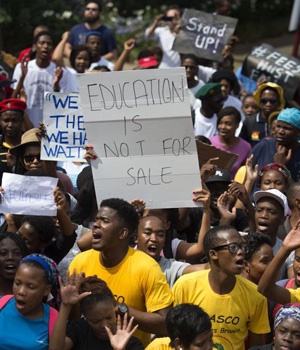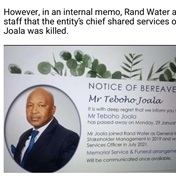
There was already a radical redirection of higher education funding going on when the #FeesMustFall movement began – but in the opposite direction.
Financial aid funds have been directed from universities to the vocational and technical college system.
What are the universities for?
A large chunk of the new funds found for higher education since 2009 have been allocated to the 50 Technical Vocational Education and Training colleges, formerly Further Education and Training colleges.
Between 2009 and this year, the department of higher education and training increased the college system’s annual funding by 165% to R8.5 billion. In the same period, university subsidies rose by about 71% to R26.2 billion.
This, however, excludes the crucial National Student Financial Aid Scheme (NSFAS).
Since 2012, NSFAS funding for technical college students has gone from almost nothing to R2 billion.
That helped push up the number of technical college students supported by the financial aid scheme, which was zero in 2006, to 228 642 last year.
In the same period, the amount of university students on state financial aid fell from a peak of 216 874 in 2011 to only 186 150 last year.
This means the financial aid scheme supported 53 189 fewer university students last year to put four times that number of kids into colleges.
According to the 2013 White Paper for post-school education and training, by 2030 the college system is supposed to grow by 300% to accommodate 2.5 million students and equip them with the required technical skills. The universities are supposed to grow at a far lower rate of 60% to 1.6 million students.
The intention is to create a more employable population, although the current fate of young people with the certificates and diplomas typically received at colleges is far bleaker than those with degrees.
Divestment from the universities
Universities have been taking in students at a faster rate than subsidies have increased.
Since 2000, universities have charged almost 14% more in student fees every year.
In the same period, state subsidies have grown by less than 10% a year, including the NSFAS funding. This means households have had to contribute more towards higher education.
Universities get most of their core “block grant” subsidies based on how many students they enrol, what those students study and how many graduates they produce.
The block grants have only grown 61% to R20.5 billion since 2009, forcing universities to compete fiercely for a shrinking pool of money.
The University of SA’s block grant has grown by 109% since 2009 to R2.3 billion; while the University of Limpopo’s block grant grew by only 28% to R570 million. The institution in Limpopo is a notable underperformer.
The amount allocated to the University of Limpopo has been less than the aggregated inflation growth of roughly 35% during that period.
Wits University and the University of Cape Town both saw their block grants rise by 44% to just more than R1 billion each, while Stellenbosch’s rose 70% to R1.2 billion.
While their block grants have not grown at the same rate as those of well-resourced universities, poorer former bantustan universities have received a larger share of NSFAS funding per head.
The largest chunk of NSFAS funding goes to the Tshwane University of Technology, where R700 million subsidises fees for 37% of students.
The University of Venda has 70% of its students on financial aid.
Stellenbosch received R128 million in financial aid last year, covering just 7.7% of its students.
The battle for access is very different between institutions. The average NSFAS grant at Rhodes University is R68 000 per year per student.
This falls to R26 000 at the University of Zululand and less than R9 000 at a typical technical college.
Paying for 0% next year
Overall tuition, registration and residence fees next year would have been in the region of R26 billion had the universities been allowed to increase their fees. Once the 0% fee increase deal was struck, that amount was reduced by 10%, or R2.6 billion, which must be found somewhere.
If the government puts a once-off injection of R2.6 billion into universities to fund the shortfall, instead of a permanent increase in subsidies, then the shortfall will widen to R6 billion by 2017.
The grand fee-free plan
The NSFAS is the core of the “fee free” plan.
It had been projected that the NSFAS would support 273 247 university students last year.
Instead, the financial aid scheme actually dropped the number of university students it supports from a record 216 874 in 2011 to only 186 150 last year.
The report on fee-free education for the poor, which was released this week, called for the NSFAS to disburse R9.7 billion to university students in 2014. Instead, only R7 billion was made available, an increase of just 3.6% from the previous year.




 Publications
Publications
 Partners
Partners









